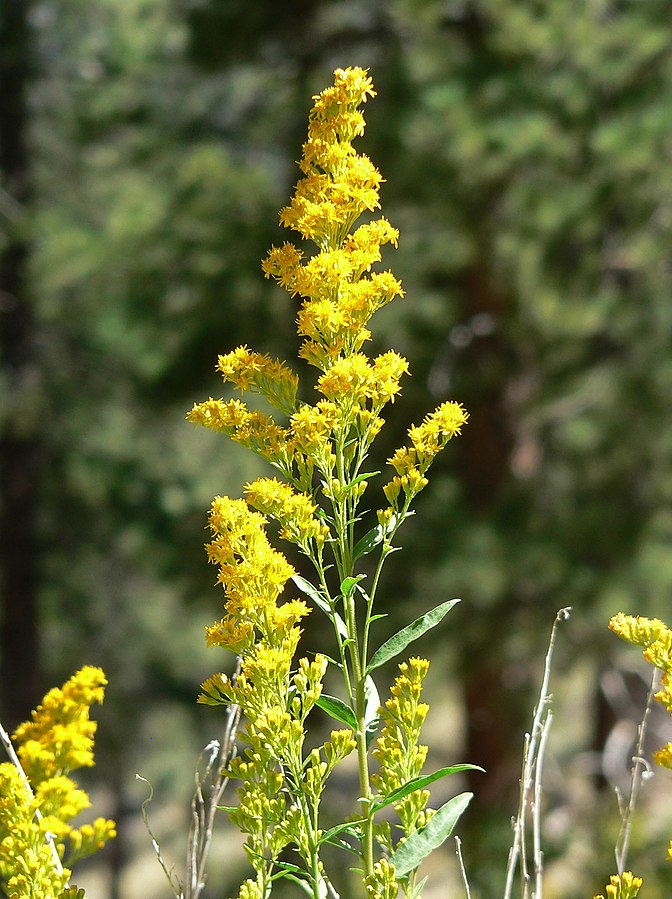
Native to western US and the northern half of Mexico, this herbaceous perennial is a member of the aster family, Asteraceae, that also includes sunflower, dandelion, and lettuce. With a rhizomatous root system, the plant grows 1-5′ tall and has a basal rosette of gray-green, lanceolate leaves up to 5″ long with toothed margins and 3 prominent veins. Ascending stems have similar but smaller leaves and both leaves and stems may be hairy. Terminal, branched, one-sided clusters of up to 500 yellow flowerheads appear from late summer to fall. Each flowerhead is composed of 6-11 ray flowers surrounding 6-17 disc flowers and provides pollen and nectar for native bees, honey bees, and butterflies, including monarchs. The small fruits/seed (achenes) are eaten by birds. Threenevere goldenrood is valued for its drought tolerance and use for erosion control, but can become invasive. The genus name, Solidago, comes from the Latin words solidus , meaning whole and ago meaning do, and refers to the wound healing properties of some members of the genus. The specific epithet, velutina, is from the Latin word, velvetum, meaning velvet and refers to the hairs of various parts of the plant. It also give rise to the alternate common name of the plant, velvet goldenrod.
Type: Herbaceous perennial
Bloom: Yellow flowerheads from late summer into fall
Size: 1-5′ H x 2-3′ W
Light: Full sun; tolerates some shade
Soil: Average, dry to medium moist, well-drained
Hardiness: Unverified
Care: Cut back to the ground dying foliage and stems after flowering
Pests and Diseases: None of significance
Propagation: Seed, division
Companion Plants: Common yarrow, deer grass, Pacific aster
Outstanding Selections: Three subspecies are recognized that vary primarily in hairiness.
Photo Credit: Stan Shebs Wikimedia Commons